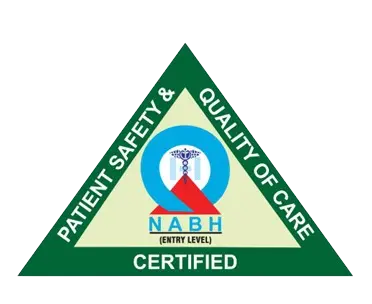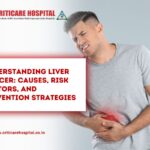Surgeries never guarantee success but the expertise, knowledge, and skills of healthcare providers minimize the risk and complexities during the surgeries leading to achieving success in the surgery. However several factors can increase the chances of risk and lead to severe problems even after surgery. One of these risks is a fat embolism, which is very rare but can occur in some cases. In this condition, fat droplets enter the bloodstream causing further serious health conditions like pulmonary embolism, stroke, or organ failure.
What is Fat Embolism?
In medical terms, fat embolism is a condition that arises when fat from bone marrow or subcutaneous fat enters the circulatory system. This happens mostly in long bone fracture surgery or delicate orthopedic surgeries. Once this fat enters the bloodstream the condition becomes more serious as fat droplets enter the lungs, brain, or other vital organs leading to a condition known as fat embolism syndrome (FES). Though FES is not a minor condition, it is treatable and when treated in the early stages can result in improved and positive outcomes.
Risk Factors Causing Fat Embolism
Fat embolism can be prevented, but only if the factors are in favor. Any uncertainty can lead to the development of FES. Below are the risk factors responsible:
1. Orthopedic surgery
One of the most common risk factors for developing fat embolism is undergoing orthopedic surgery, particularly surgery in long bones like the femur or pelvis. These bones contain a high amount of marrow which is rich in fat. When performing surgery on these bones, a few droplets of fat can enter into blood bloodstream causing or increasing the risk of embolism.
- Hip and Knee replacement surgeries are commonly responsible for the development of embolism because they require excessive manipulation of bone during certain procedures. Another risk factor under this surgery is the use of an intramedullary rod in fracture. This is because it involves reaming out of the bone marrow, which can let the fat enter the bloodstream.
2. Trauma
In this condition, fat embolism is caused when bone gets injured due to blunt force or fracture. The force from such injuries can cause fat from marrow or adipose tissue to enter the circulation. In this case, is possible when there are multiple fractures or severe bone crush injuries.
- Traumatic brain injuries: They are not directly related to fat release but they can worsen the inflammatory response, which increases the chances of fat embolism syndrome developing post-trauma. This is the deadly combination of surgical intervention and trauma which increases the risk, especially in extensive orthopedic surgery.
3. Liposuction and Cosmetic Procedures
This involves a procedure where fat is removed from the different parts of the body for beauty purposes also known as a cosmetic procedure. Although it is safe and involves minimum risk it can also lead to fat embolism. It is possible when the fat particle enters the bloodstream during the removal or extraction process. There are also some cases where fat embolism was caused due to large volumes of fat removal or mistakenly injuring the fat in the blood vessels during fat grafting.
4. High-Pressure Mechanical Ventilation
Patients with pre-existing lung conditions who require mechanical ventilation after surgery are also at increased risk of developing fat embolism. When high pressure is used it can cause alveolar rupture leading to the entry of fat droplets into the pulmonary circulation. Patients suffering from acute respiratory distress syndrome (ARDS) are given high-positive end-expiratory pressure (PEEP) which can increase the risk of fat embolism by forcing fat droplets into the bloodstream.
5. Prolonged Immobilization
Immobility after the operation for a long period increases the chances of the development of fat embolism. Immobility increases the risk of blood clots that lead to the accumulation of fat droplets in the blood vessels. This causes to the patients have obesity. Patients on bed rest after a serious orthopedic surgery and procedure should be carefully monitored to identify the signs of fat embolism syndrome. Movement, early mobilization, physiotherapy, use of compression devices, or anticoagulants can help reduce the risk.
6. Underlying Health conditions
Other than orthopedic surgery and trauma fat embolism can also be developed due to certain underlying conditions. These include:
- Osteoporosis: Bones get fragile in osteoporosis and are more prone to fractures increasing the risk of fat embolism during or after surgery.
- Obesity: In obesity, excess adipose tissue increases the chances of entering the bloodstream during surgery or trauma.
- Hyperlipidemia: This is a condition where the level of lipids is elevated in the blood contributing to the development of fat embolism.
Healthcare providers need to make sure that patients suffering from these conditions are given the right treatment and extra care should be taken during surgical procedures.
Conclusion
In conclusion, fat embolism is risky, it can cause further problems to the individual but if it’s diagnosed at the early stages then the whole effect can be minimized and the individual can get back to normal health. Both the healthcare provider and patient need to keep them self-aware of this condition so that they are mentally prepared and have planned preventive measures before the surgery so that it can be diagnosed just after a fat embolism is detected. Careful surgical planning and early intervention have helped many patients and given them positive outcomes.




